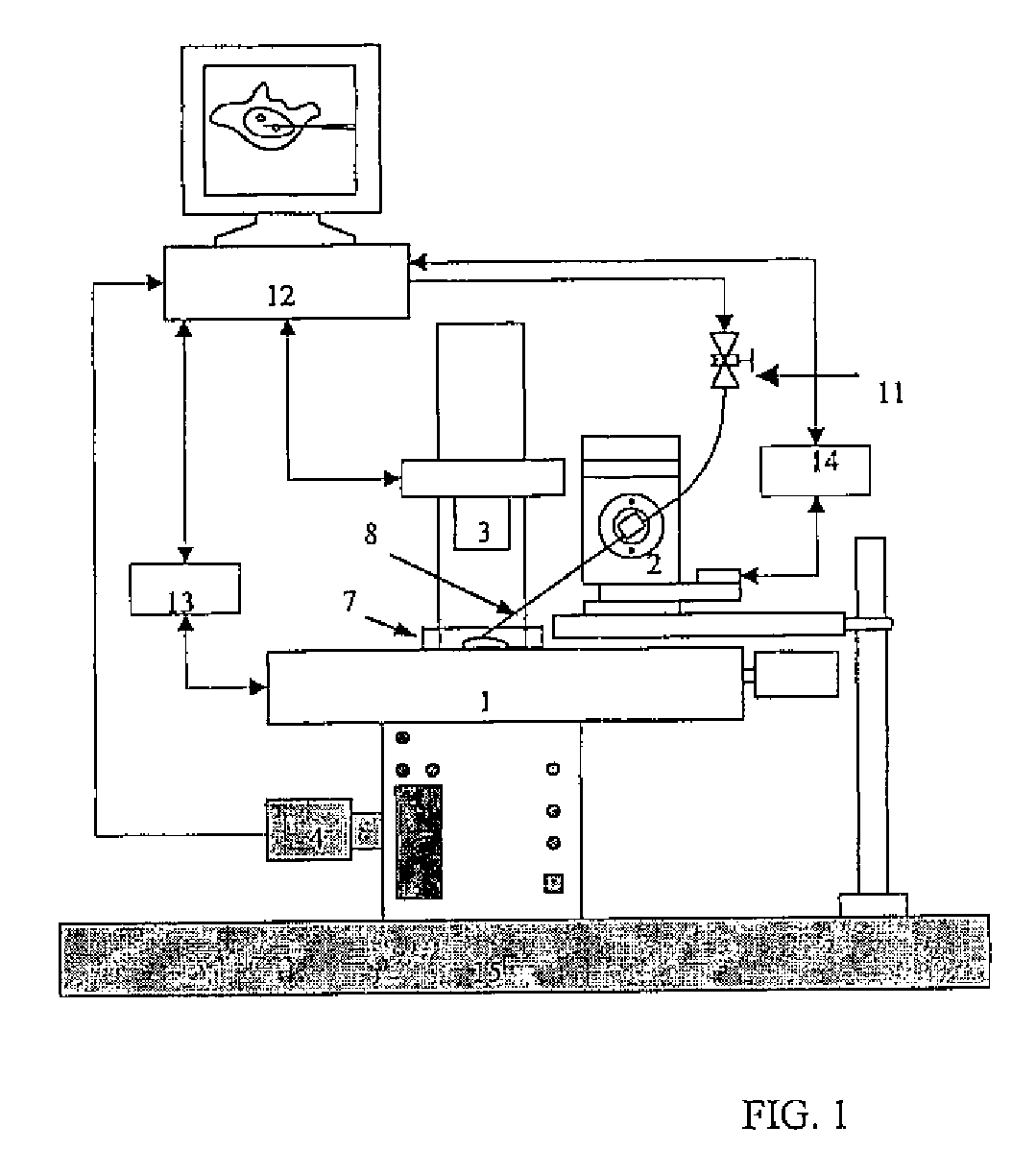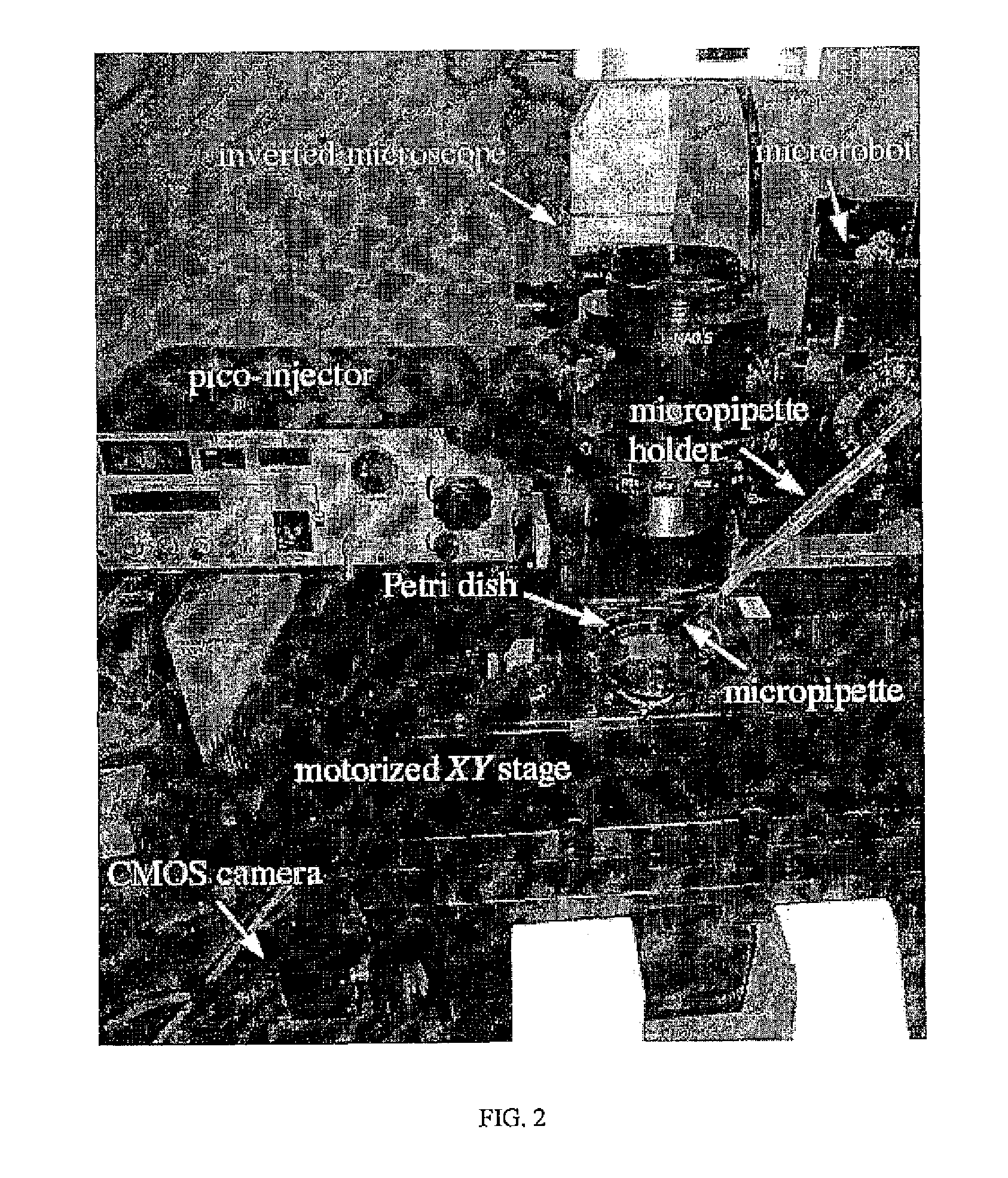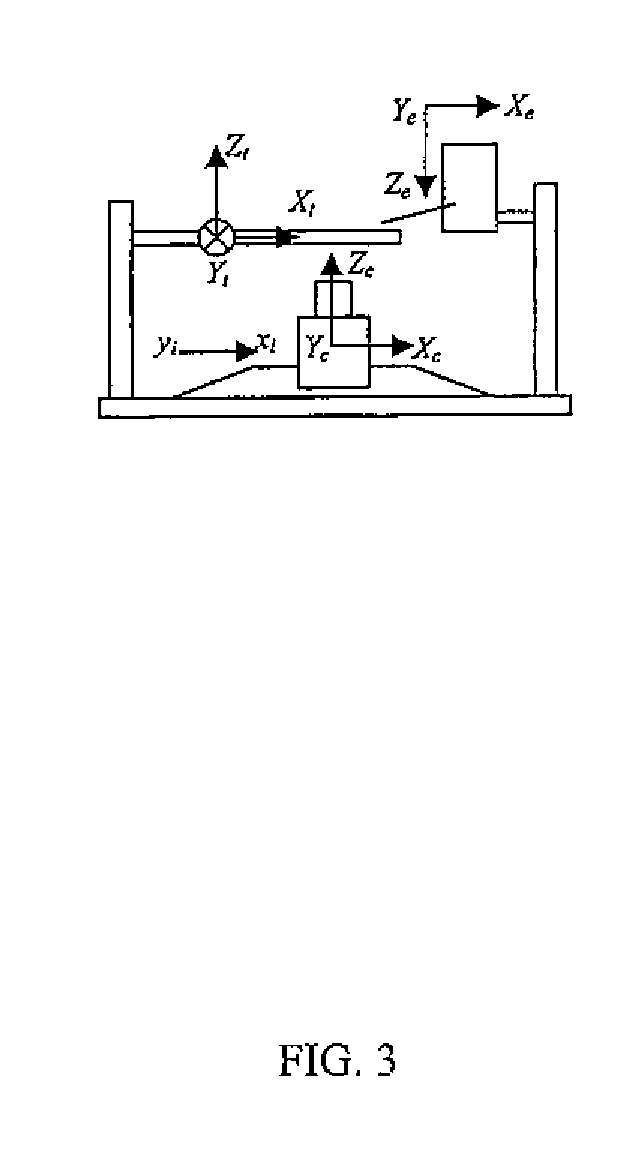Vision based method for micromanipulating biological samples
a micromanipulation and biological sample technology, applied in the field of micromanipulation, automation, computer vision, microrobotics, can solve the problems of less micrometers, less micrometers thick, and more stringent requirements for microrobotic positioning, and achieve low throughput and high reproducibility
- Summary
- Abstract
- Description
- Claims
- Application Information
AI Technical Summary
Benefits of technology
Problems solved by technology
Method used
Image
Examples
example 1
[0112]A. Materials
[0113]The cells: porcine aortic endothelial cells, isolated from porcine aorta and cultured in cell medium (M199 medium, 5% calf serum, and 5% fetal bovine serum with a pH value of 7.4). Microrobotic injection was performed after 2 or 3 days of cell passage.
[0114]During system testing, fluorescent dyes (dextran, Texas Red, 70,000 MW, neutral, Invitrogen) mixed with PBS buffer.
[0115]The system, used in this example is the system shown in FIG. 2, which employs a three-degrees-of-freedom microrobot (MP-285, Sutter) with a travel of 25 mm and a 0.04 μm positioning resolution along each axis. One motion control card (NI PCI-6289) is mounted on a host computer (3.0 GHz CPU, 1 GB memory) where control algorithms operate. Visual feedback is obtained through a CMOS camera (A601f, Basler) mounted on an inverted microscope (IX81, Olympus). A Polystyrene Petri dish (55 mm, Falcon) where the endothelial cells are seeded is placed on a motorized precision XYstage (ProScanII, Pri...
PUM
| Property | Measurement | Unit |
|---|---|---|
| outer diameter | aaaaa | aaaaa |
| height | aaaaa | aaaaa |
| distance | aaaaa | aaaaa |
Abstract
Description
Claims
Application Information
 Login to View More
Login to View More - R&D
- Intellectual Property
- Life Sciences
- Materials
- Tech Scout
- Unparalleled Data Quality
- Higher Quality Content
- 60% Fewer Hallucinations
Browse by: Latest US Patents, China's latest patents, Technical Efficacy Thesaurus, Application Domain, Technology Topic, Popular Technical Reports.
© 2025 PatSnap. All rights reserved.Legal|Privacy policy|Modern Slavery Act Transparency Statement|Sitemap|About US| Contact US: help@patsnap.com



